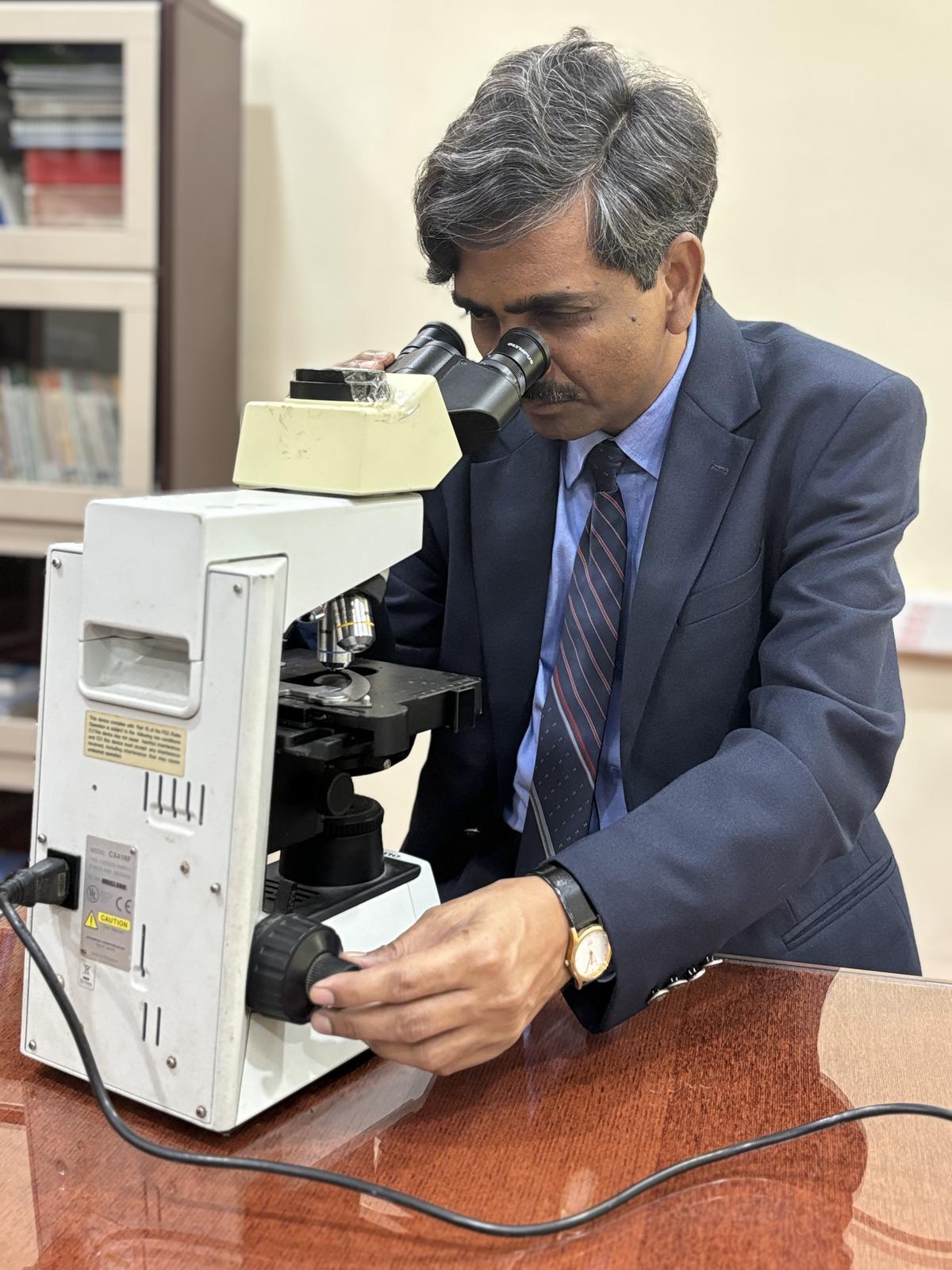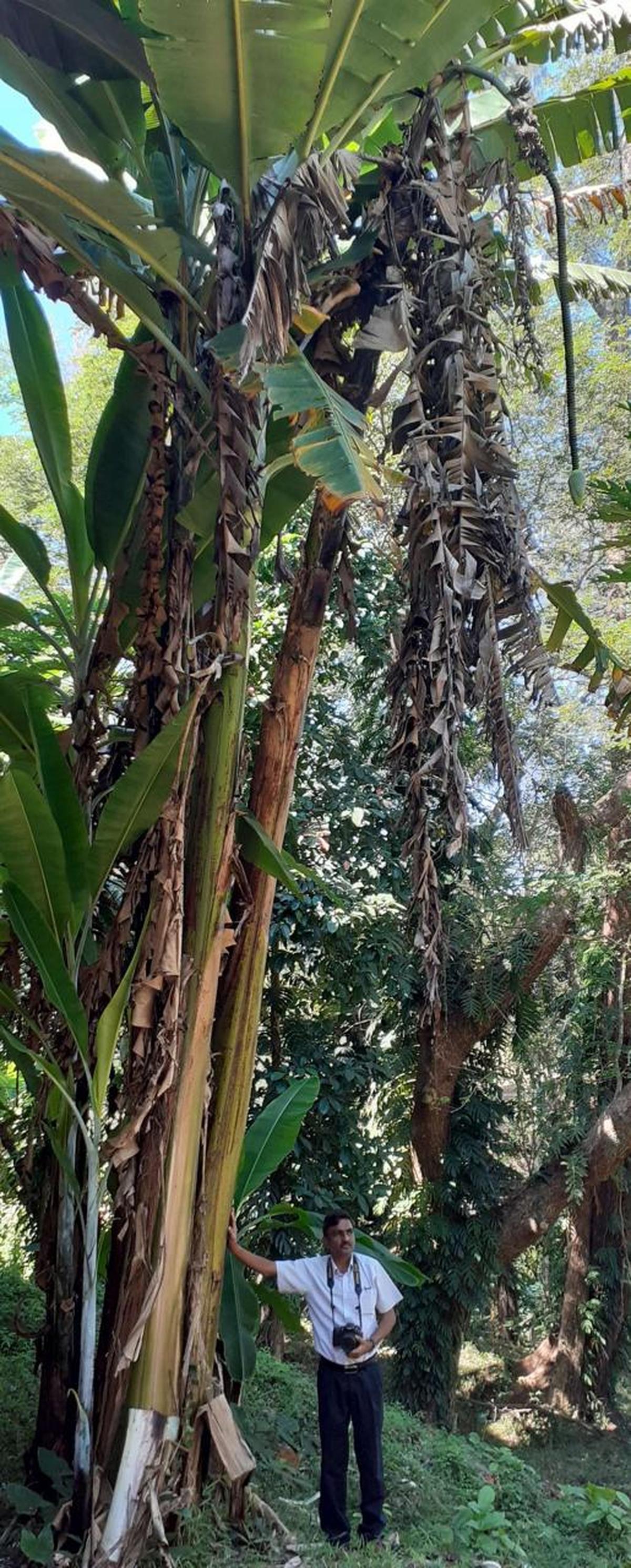The world’s longest banana invades Andamans

Specimens from the Indian Museum. |Picture source: Special arrangement
A erosion of about 4.2 meters was recorded from a wild banana in the Andaman and Nicobar Islands, making it the longest recorded erosion among bananas around the world. Details of the findings were published in the International Peer-Reviewed Science Journal Botanical letters Earlier this year.
The plastids are recorded in a unique wild banana. musa indandamanensis, This was the first recorded in 2012 from remote tropical forests near the Andaman and Nicobar Islands, and discovered this in 2014 in the journal Science.

Scientist Lal Ji Singh. |Picture source: Special arrangement
Initially musa indandamanensis It was found in the Little Andaman Islands in Lal Ji Singh, head of the Indian Plant Survey Centre in Andaman and Nicobar Island, with the specimens erosion length of about 3 meters. The scientist said that usually, the malnourished (Fruit bundle Lux axis) of cultivated banana species is about 1 meter long.
A few months ago, Dr. Singer and his team encountered wild bananas in Campbell Bay, Nicobar, and recorded non-quality longer than all other specimens recorded in the past. “musa indandamanensis LJ Singh has long-term erosion of general and wild bananas, especially the records of endemic varieties found in ANI (Andaman and Nicobar Islands). ” Botanical letters Earlier this year.
“Although the length of the trees recorded in 2012 was the same and about 11 meters high, the stems of wild banana trees were fenced differently. The species recorded by the Little Andamans had less than 100 cm in circumference, but the specimens recorded in Campbell Bay were about 110 cm in fence and Dr. Singh was about 110 cm.”

Plant species in the wild. |Picture source: Special arrangement
The specimens displayed
After the discovery of erosion, the specimens have been sent to museums across the country, including the Indian Museum in Kolkata, where the specimens are 4.2 meters long and have been exhibited in industrial areas of the Indian plant survey for several months. Another specimen over four meters is the Andaman and Nicobar Regional Center Museum.
As the species has been assessed as “severely endangered”, it is part of the site conservation musa indandamanensis, The saplings of this species were introduced in the Botanical Gardens of the Indian Botanical Gardens of Howrah, Andaman and Nicobar in the regional center of the Acharya Jagadish Chandra Bose, and in the central regional center of Uttar Pradesh.
What makes wild bananas musa indandamanensis Importantly, in addition to erosion (Fruit bundle Lux axis), plant breeders are a natural genetic resource for the development of high yields and disease-resistant varieties. fruit musa indandamanensis Dr. Singh said it was golden or orange, and when ripe, it turned into a golden orange flesh and a large number of irregular seeds. He added that all specimens of wild bananas were recorded near water surfaces or near water flows near waterfalls in the Andamanians and Nicobar Islands.
The plant survey of Indian scientists has found more than 25 new species that are scientific, including the discovery of new genus, he said the Andamans and Nicobar Islands are an ecological hotspot and more botanical research is needed to make more wonders uncover.
publishing – May 11, 2025 11:45 pm ist



